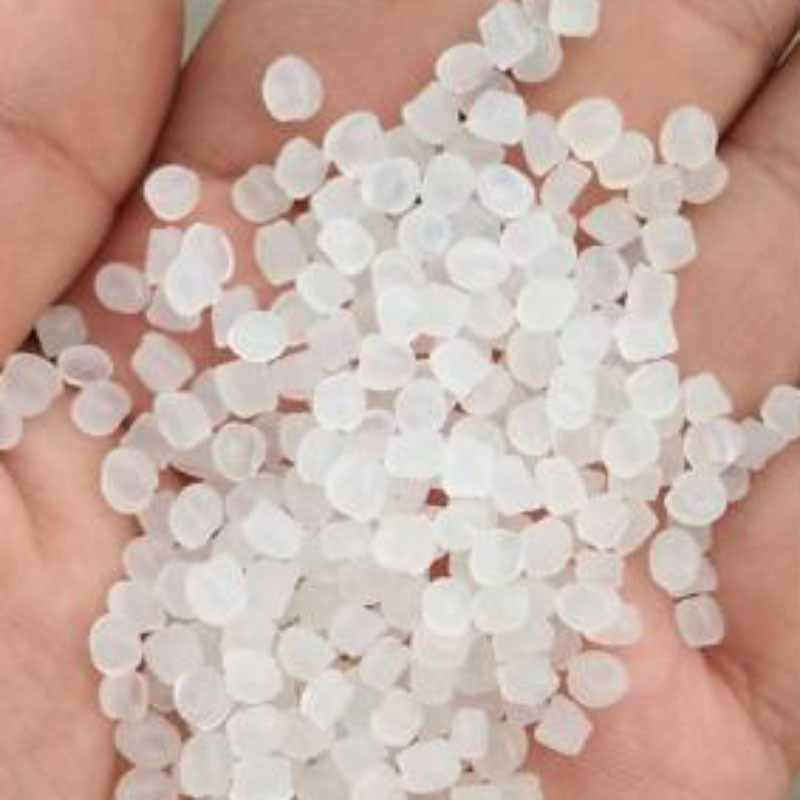How Plastic Raw Materials Are Shaping the Future of Robotics
Release Time:
Jul 05,2025
How Plastic Raw Materials Are Shaping the Future of Robotics Table of Contents Introduction to Plastic Raw Materials in Robotics The Significance of Plastic Materials in Robotics Types of Plastic Used in Robotics Advantages of Using Plastic Materials in Robotic Applications Sustainability in Robotic Manufacturing: A Plastic Perspective Innovations in Plastic Materials Transforming R
How Plastic Raw Materials Are Shaping the Future of Robotics
Table of Contents
- Introduction to Plastic Raw Materials in Robotics
- The Significance of Plastic Materials in Robotics
- Types of Plastic Used in Robotics
- Advantages of Using Plastic Materials in Robotic Applications
- Sustainability in Robotic Manufacturing: A Plastic Perspective
- Innovations in Plastic Materials Transforming Robotics
- Future Trends in Plastic Use for Robotics
- Frequently Asked Questions
- Conclusion
Introduction to Plastic Raw Materials in Robotics
The robotics industry is on the brink of an evolution, and one of the driving forces behind this transformation is the advent of **plastic raw materials**. As robotics applications expand across various sectors, from manufacturing to healthcare, the demand for lightweight, durable, and cost-effective materials becomes increasingly evident. This article explores how plastic raw materials are not only enhancing the performance of robotic systems but also paving the way for innovative designs and sustainable practices in the industry.
The Significance of Plastic Materials in Robotics
Plastic materials are crucial in robotics due to their versatility and adaptability. Unlike traditional materials such as metal, plastics can be molded into complex shapes and structures without compromising strength or integrity. This unique property allows engineers and designers to create more efficient robots tailored for specific tasks. Additionally, the growing range of **advanced polymer compounds** enhances capabilities, thereby expanding the functional scope of robots.
Lightweight Designs for Enhanced Performance
One of the most significant advantages of using plastic raw materials is their lightweight nature. Robots must often operate in environments where weight is a critical factor. Lightweight designs improve speed, agility, and overall energy efficiency. For instance, drones and robotic arms benefit immensely from plastic materials, allowing them to perform tasks more effectively.
Customization and Flexibility in Robotic Solutions
Plastics offer unmatched customization options. By varying the polymer composition, manufacturers can develop materials with specific properties, such as enhanced flexibility, resistance to temperature fluctuations, and improved tensile strength. This adaptability enables the manufacturing of specialized robots for various applications, including medical assistance, agricultural automation, and exploration.
Types of Plastic Used in Robotics
The selection of appropriate plastic raw materials is vital to the performance and longevity of robotic systems. Various types of plastics are utilized in robotics, each serving a unique purpose.
Polycarbonate
Polycarbonate is extensively used for its exceptional impact resistance and clarity. This makes it ideal for applications requiring transparency, such as camera housings in robotic systems.
Acrylonitrile Butadiene Styrene (ABS)
ABS is widely favored for its sturdy nature and ease of manufacturing. Its ability to withstand harsh conditions makes it suitable for various robotic applications, especially in industrial settings.
Polypropylene
Polypropylene is lightweight and provides excellent chemical resistance. It is commonly used in robotic enclosures and components that need to withstand exposure to various substances.
Thermoplastic Elastomers (TPE)
TPE combines the properties of rubber and plastic, making it ideal for applications requiring flexibility and durability. Robots that interact with humans often use TPE for soft grips and coverings.
Advantages of Using Plastic Materials in Robotic Applications
Utilizing plastic raw materials in robotics offers numerous advantages that contribute to overall efficiency and effectiveness.
Cost Efficiency
Plastics are generally more affordable than metals and other materials. This cost efficiency allows companies to invest in **advanced robotic solutions** without breaking the bank.
Durability and Resistance
High-quality plastics can withstand wear and tear, making them suitable for long-term use. They also exhibit resistance to chemicals, moisture, and UV radiation, ensuring robotic systems function optimally in various environments.
Ease of Manufacture
The ease of molding and shaping plastic materials accelerates the production process. Rapid prototyping with plastics enables engineers to iterate designs quickly, responding to market demands with agility.
Sustainability in Robotic Manufacturing: A Plastic Perspective
As environmental concerns grow, the robotics industry is increasingly focusing on sustainability. Plastic materials are leading this charge through innovative recycling and biodegradable options.
Recyclable Plastics in Robotics
Many plastics used in robotics can be recycled, significantly reducing waste and environmental impact. Companies are now sourcing recycled plastics to manufacture robot components, promoting a circular economy.
Biodegradable Plastics for Sustainable Robotics
Research into biodegradable plastics is opening new avenues for sustainable robotics. These materials break down naturally, minimizing landfill contributions and ecological footprints.
Innovations in Plastic Materials Transforming Robotics
The continuous evolution of plastic raw materials is driving innovation within the robotics sector. Several exciting advancements are currently shaping the landscape.
Smart Plastics: Integrating Technology
Smart plastics, embedded with sensors and electronic components, are being developed to enhance robotic capabilities. These materials can monitor environmental changes and adapt robot behavior in real-time.
3D Printing of Plastic Components
3D printing technology is revolutionizing the way robotic parts are manufactured. Plastic filaments used in 3D printing allow for rapid prototyping and customization, enabling designers to create complex geometries that were once impossible.
Future Trends in Plastic Use for Robotics
The future of robotics is bright, with plastic materials playing a pivotal role in shaping upcoming trends.
Integration of AI and Robotics
The integration of artificial intelligence (AI) with robotic systems is set to revolutionize the industry. Plastic materials will evolve to support the sophisticated requirements of AI-enhanced robots.
Expansion into New Sectors
As robotics technology advances, the use of plastic materials will expand into sectors like healthcare, agriculture, and logistics. This diversification will foster innovative solutions tailored to specific industry needs.
Increased Research and Development
Significant investment in research and development will drive the creation of new plastic materials with advanced properties, tailored for future robotic applications.
Frequently Asked Questions
1. What types of plastic materials are commonly used in robotics?
Plastic materials such as polycarbonate, ABS, polypropylene, and thermoplastic elastomers (TPE) are widely used in robotics due to their unique properties.
2. How do plastic materials contribute to the sustainability of robotics?
Plastics can be recycled and there are ongoing developments in biodegradable plastics, which significantly reduce waste and promote sustainable practices within the robotics industry.
3. What are smart plastics and how are they used in robotics?
Smart plastics are materials embedded with sensors and electronics that allow robots to monitor their surroundings and adapt their behavior accordingly.
4. How does the use of plastics impact the cost of robotic systems?
The use of plastics generally reduces the overall manufacturing costs of robotic systems, making advanced robotics more accessible to businesses.
5. What future trends are expected in the use of plastic in robotics?
Future trends include the integration of AI with robotics, expansion into new sectors, and increased research and development of advanced plastic materials.
Conclusion
The role of plastic raw materials in shaping the future of robotics cannot be overstated. Their lightweight properties, durability, cost-effectiveness, and adaptability make them indispensable in the advancement of robotic systems. As we look toward the future, the intersection of innovative plastic materials with cutting-edge technology will undoubtedly lead to groundbreaking developments in robotics. By embracing sustainable practices and fostering continuous innovation in plastic materials, the robotics industry is poised for a transformative journey that will redefine capabilities and applications across various sectors.
Keywords:
You Can Also Learn More About Industry Trends






